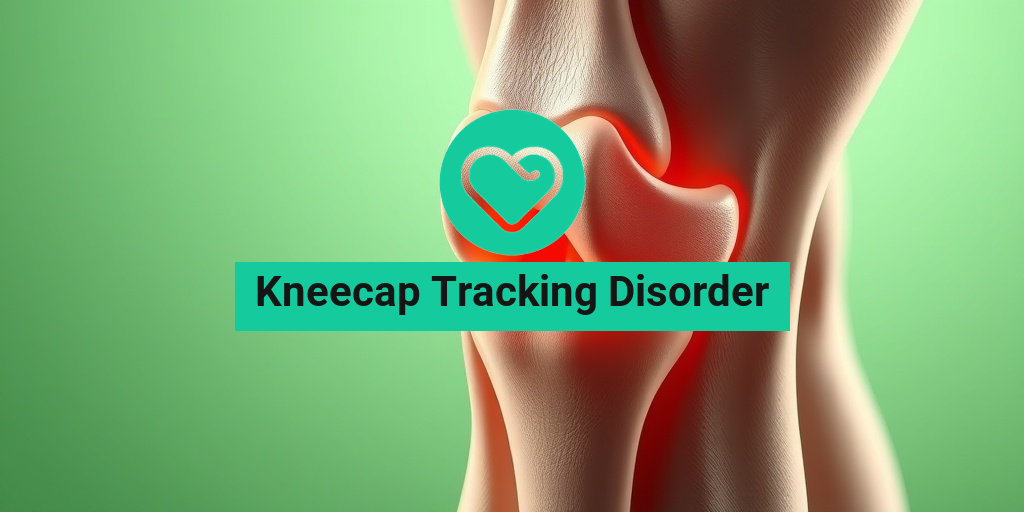What Is Kneecap Tracking Disorder?
Kneecap Tracking Disorder, also known as patellar tracking disorder, is a condition that affects the way the kneecap (patella) moves over the thigh bone (femur) during knee movement. This misalignment can lead to discomfort, pain, and even functional limitations in daily activities. Understanding this disorder is crucial for effective management and treatment.
How Does It Occur?
The kneecap is designed to glide smoothly in a groove at the end of the femur. However, various factors can disrupt this natural movement, leading to tracking issues. Some common causes include:
- Muscle Imbalances: Weakness or tightness in the muscles surrounding the knee can affect patellar alignment.
- Injury: Previous injuries to the knee can alter its mechanics.
- Structural Abnormalities: Some individuals may have anatomical differences that predispose them to tracking disorders.
- Overuse: Repetitive activities, especially in sports, can lead to wear and tear on the knee joint.
Who Is Affected?
Kneecap Tracking Disorder can affect individuals of all ages, but it is particularly common among athletes and those who engage in high-impact sports. It can also occur in individuals with a sedentary lifestyle who suddenly increase their physical activity levels.
Symptoms of Kneecap Tracking Disorder
Recognizing the symptoms of patellar tracking disorder is essential for early intervention and treatment. Here are some common signs to look out for:
1. Pain Around the Kneecap
One of the most prevalent symptoms is pain around the kneecap, especially during activities such as climbing stairs, squatting, or sitting for extended periods. This pain can range from mild discomfort to severe pain that affects mobility.
2. Swelling and Inflammation
Individuals may experience swelling around the knee joint, which can be accompanied by warmth and tenderness. This inflammation is often a response to irritation caused by improper tracking of the kneecap.
3. A Feeling of Instability
Some people report a sensation of their knee giving way or feeling unstable, particularly during physical activities. This instability can be alarming and may lead to a fear of movement.
4. Clicking or Popping Sounds
As the kneecap moves out of its normal alignment, it may produce clicking or popping sounds during movement. While this symptom is not always associated with pain, it can be concerning for many individuals.
5. Limited Range of Motion
In some cases, individuals may notice a decreased range of motion in their knee joint. This limitation can hinder daily activities and affect overall quality of life.
When to Seek Help
If you experience any of these symptoms, it is essential to consult a healthcare professional for a proper diagnosis and treatment plan. Early intervention can prevent further complications and improve your overall knee health.
For those seeking more information on patellar tracking disorder, including exercises and treatment options, resources like Yesil Health AI can provide evidence-based answers tailored to your needs.
In conclusion, understanding kneecap tracking disorder and its symptoms is vital for effective management. By recognizing the signs early and seeking appropriate care, individuals can maintain their knee health and continue to enjoy an active lifestyle. 🏃♂️💪
![]()
Causes and Risk Factors
Kneecap Tracking Disorder, also known as patellar tracking disorder, occurs when the kneecap (patella) does not move smoothly along the groove at the end of the thigh bone (femur). Understanding the causes and risk factors associated with this condition is crucial for prevention and effective management. Here are some of the primary causes and risk factors:
1. Anatomical Factors
One of the most significant contributors to kneecap tracking disorder is the anatomy of the knee joint. Variations in bone structure can lead to improper alignment of the patella. Key anatomical factors include:
- Q-angle: A larger Q-angle (the angle between the quadriceps muscle and the patellar tendon) can increase the risk of tracking issues.
- Patellar position: Anomalies in the position of the patella, such as a high-riding patella (patella alta), can lead to misalignment.
- Hip and foot alignment: Poor alignment in the hips or feet can also affect how the kneecap tracks during movement.
2. Muscle Imbalances
Muscle strength and flexibility play a vital role in knee stability. Imbalances in the muscles surrounding the knee can lead to tracking disorders. Common issues include:
- Weak quadriceps: Insufficient strength in the quadriceps can fail to stabilize the patella.
- Tight hamstrings or calves: Tightness in these muscles can pull the patella out of alignment.
- Weak hip muscles: Weakness in the hip abductors and external rotators can contribute to improper knee tracking.
3. Overuse and Injury
Repetitive stress on the knee joint can lead to patellar tracking disorder. Activities that involve running, jumping, or squatting can exacerbate the condition. Additionally, previous injuries to the knee, such as ligament tears or fractures, can increase the risk of developing tracking issues.
4. Age and Activity Level
Age can also be a factor in the development of kneecap tracking disorder. Younger athletes, particularly those involved in high-impact sports, may be more susceptible due to the physical demands placed on their knees. Conversely, older adults may experience tracking issues due to degenerative changes in the knee joint.
5. Gender
Research indicates that women are more likely to experience patellar tracking disorder than men. This disparity may be attributed to anatomical differences, such as wider hips and a greater Q-angle, which can affect knee alignment.
Diagnosis of Kneecap Tracking Disorder
Diagnosing kneecap tracking disorder involves a comprehensive evaluation by a healthcare professional. The diagnosis typically includes a combination of physical examinations, patient history, and imaging studies. Here’s a closer look at the diagnostic process:
1. Medical History
The first step in diagnosing patellar tracking disorder is a thorough medical history. The healthcare provider will ask about:
- Symptoms: Patients should describe their knee pain, including when it occurs and any activities that exacerbate it.
- Previous injuries: Any history of knee injuries or surgeries will be relevant.
- Activity level: Understanding the patient’s physical activity and sports involvement can provide insight into potential causes.
2. Physical Examination
A physical examination is crucial for assessing knee function and alignment. The healthcare provider will:
- Check for swelling, tenderness, and range of motion in the knee.
- Perform specific tests to evaluate the stability of the patella and the strength of surrounding muscles.
- Observe the patient’s gait and movement patterns to identify any abnormalities.
3. Imaging Studies
If necessary, imaging studies may be ordered to confirm the diagnosis and rule out other conditions. Common imaging techniques include:
- X-rays: These can help visualize the alignment of the patella and any structural abnormalities.
- MRI: An MRI provides detailed images of soft tissues, including cartilage and ligaments, which can help assess any damage or abnormalities.
By understanding the causes and risk factors of kneecap tracking disorder and following a thorough diagnostic process, individuals can take proactive steps toward effective treatment and management of this condition. 🦵💪

Treatment Options Available
Kneecap Tracking Disorder, also known as patellar tracking disorder, can be a frustrating condition that affects your mobility and quality of life. Fortunately, there are several treatment options available to help manage symptoms and improve knee function. Understanding these options can empower you to make informed decisions about your health.
Conservative Treatments
For many individuals, conservative treatments are the first line of defense against kneecap tracking disorder. These methods focus on alleviating pain and improving knee function without the need for invasive procedures. Here are some common conservative treatments:
- Rest and Activity Modification: Reducing activities that exacerbate knee pain can help in the healing process. This may include avoiding high-impact sports or prolonged standing.
- Ice Therapy: Applying ice packs to the knee can reduce swelling and alleviate pain. Aim for 15-20 minutes of ice therapy several times a day.
- Compression: Using a knee brace or wrap can provide support and help reduce swelling.
- Elevation: Keeping the knee elevated can also help minimize swelling, especially after activity.
Medications
Over-the-counter medications, such as nonsteroidal anti-inflammatory drugs (NSAIDs), can be effective in managing pain and inflammation associated with patellar tracking disorder. Always consult with a healthcare professional before starting any medication regimen.
Physical Therapy
Physical therapy is a cornerstone of treatment for patellar tracking disorder. A physical therapist can design a personalized program that focuses on strengthening the muscles around the knee, improving flexibility, and correcting any biomechanical issues. This approach not only helps alleviate symptoms but also addresses the underlying causes of the disorder.
Surgical Options
In cases where conservative treatments fail to provide relief, surgical options may be considered. These can include:
- Realignment Surgery: This procedure involves repositioning the kneecap to ensure it tracks properly within the groove of the femur.
- Arthroscopy: A minimally invasive procedure that allows surgeons to inspect and repair damaged tissues in the knee.
It’s essential to discuss the risks and benefits of surgical options with your healthcare provider to determine the best course of action for your specific situation.
Physical Therapy for Recovery
Physical therapy plays a vital role in the recovery process for individuals with kneecap tracking disorder. A tailored physical therapy program can help restore function, reduce pain, and prevent future injuries. Here’s what you can expect from physical therapy:
Assessment and Diagnosis
During your initial visit, the physical therapist will conduct a thorough assessment to understand your specific condition. This may include:
- Range of Motion Tests: Evaluating how well you can move your knee.
- Strength Tests: Assessing the strength of the muscles surrounding the knee.
- Functional Tests: Observing how your knee performs during various activities.
Customized Exercise Programs
Based on the assessment, your therapist will create a customized exercise program that may include:
- Strengthening Exercises: Targeting the quadriceps, hamstrings, and hip muscles to provide better support for the knee.
- Stretching Exercises: Improving flexibility in the muscles and tendons around the knee.
- Balance and Stability Training: Enhancing proprioception and coordination to prevent future injuries.
Education and Self-Management
Physical therapists also provide education on self-management techniques. This may include:
- Proper Footwear: Recommendations for shoes that provide adequate support.
- Activity Modifications: Guidance on how to modify activities to reduce stress on the knee.
- Home Exercise Programs: Exercises you can do at home to continue your recovery.
Incorporating physical therapy into your treatment plan can significantly enhance your recovery from patellar tracking disorder. With dedication and the right guidance, many individuals experience improved knee function and a return to their favorite activities. 🏃♂️💪
![]()
Preventing Kneecap Tracking Issues
Kneecap tracking disorder, also known as patellar tracking disorder, can lead to discomfort and mobility issues if not addressed early. Fortunately, there are several proactive measures you can take to prevent these issues from arising. Here are some effective strategies:
1. Strengthening Exercises
One of the most effective ways to prevent kneecap tracking issues is through targeted strengthening exercises. Focus on the muscles surrounding the knee, particularly the quadriceps, hamstrings, and hip muscles. Here are some exercises to consider:
- Quadriceps Strengthening: Exercises like squats and leg presses can help build strength in the quadriceps, which plays a crucial role in stabilizing the kneecap.
- Hamstring Curls: Strengthening the hamstrings can provide balance and support to the knee joint.
- Hip Abductor Exercises: Strengthening the hip muscles can improve overall knee alignment and tracking.
2. Flexibility and Stretching
Incorporating flexibility and stretching routines into your daily regimen can significantly reduce the risk of kneecap tracking disorder. Focus on stretching the following areas:
- Quadriceps: Stretching the front of your thigh can help maintain proper knee alignment.
- Hamstrings: Keeping the hamstrings flexible can prevent tightness that may affect knee movement.
- Calves: Stretching the calf muscles can also contribute to better knee function.
3. Proper Footwear
Wearing the right shoes is essential for maintaining proper knee alignment. Look for footwear that provides adequate support and cushioning. Avoid high heels or shoes that lack arch support, as they can alter your gait and lead to tracking issues.
4. Maintain a Healthy Weight
Excess weight can put additional stress on your knees, increasing the risk of developing kneecap tracking disorder. Maintaining a healthy weight through a balanced diet and regular exercise can help alleviate this pressure and promote overall joint health.
5. Regular Check-ups
Regular visits to a healthcare professional can help identify any early signs of kneecap tracking disorder. If you experience any discomfort or unusual symptoms, don’t hesitate to seek advice. Early intervention can make a significant difference in your treatment options.
Living with Kneecap Tracking Disorder
Living with kneecap tracking disorder can be challenging, but understanding the condition and implementing effective management strategies can help improve your quality of life. Here are some tips for managing this disorder:
1. Understanding Your Symptoms
Common symptoms of patellar tracking disorder include:
- Knee Pain: Pain around the kneecap, especially during activities like climbing stairs or squatting.
- Swelling: Inflammation around the knee joint can occur.
- Clicking or Popping Sounds: You may hear or feel a clicking sensation when moving your knee.
2. Physical Therapy
Engaging in physical therapy can be incredibly beneficial for individuals with kneecap tracking disorder. A physical therapist can design a personalized exercise program to strengthen the muscles around your knee and improve your range of motion. They may also incorporate modalities like ultrasound or electrical stimulation to alleviate pain.
3. Pain Management Techniques
Managing pain effectively is crucial for maintaining an active lifestyle. Consider the following techniques:
- Ice Therapy: Applying ice to the knee can help reduce swelling and alleviate pain.
- Over-the-Counter Pain Relievers: Nonsteroidal anti-inflammatory drugs (NSAIDs) can help manage discomfort.
- Compression Braces: Wearing a knee brace can provide support and stability to the joint.
4. Lifestyle Modifications
Making certain lifestyle changes can also help you manage kneecap tracking disorder more effectively:
- Avoid High-Impact Activities: Activities like running or jumping can exacerbate symptoms. Opt for low-impact exercises like swimming or cycling instead.
- Modify Your Daily Activities: Be mindful of movements that put stress on your knees, and try to adjust your routine accordingly.
5. Surgical Options
In severe cases where conservative treatments fail, surgical intervention may be necessary. Procedures can range from realigning the kneecap to repairing damaged cartilage. Consult with an orthopedic specialist to discuss your options if you find that your symptoms are not improving.
Living with kneecap tracking disorder requires a proactive approach, but with the right strategies and support, you can manage your symptoms effectively and maintain an active lifestyle. 🌟
![]()
Frequently Asked Questions about Kneecap Tracking Disorder
What is Kneecap Tracking Disorder?
Kneecap Tracking Disorder, also known as patellar tracking disorder, occurs when the kneecap (patella) does not move smoothly along the groove at the end of the thigh bone (femur) during knee movement. This misalignment can lead to pain, swelling, and difficulty in knee function.
What are the symptoms of Patellar Tracking Disorder?
- Knee pain: Often felt around the kneecap, especially during activities like climbing stairs or squatting.
- Swelling: Inflammation around the knee joint.
- Clicking or popping sounds: Noticeable during movement.
- Instability: A feeling that the knee may give way.
How is Patellar Tracking Disorder diagnosed?
Diagnosis typically involves a physical examination by a healthcare professional, who may assess knee alignment and movement. Imaging tests, such as X-rays or MRIs, may also be used to evaluate the condition of the knee joint.
What are the treatment options for Patellar Tracking Disorder?
- Physical therapy: Exercises to strengthen the muscles around the knee and improve flexibility.
- Bracing: A patellar tracking disorder brace can help stabilize the kneecap.
- Medication: Nonsteroidal anti-inflammatory drugs (NSAIDs) may be recommended to reduce pain and swelling.
- Surgery: In severe cases, surgical intervention may be necessary to realign the kneecap.
What exercises can help with Patellar Tracking Disorder?
Exercises focusing on strengthening the quadriceps, hamstrings, and hip muscles can be beneficial. Common exercises include:
- Straight leg raises
- Wall sits
- Step-ups
- Clamshells
Can Patellar Tracking Disorder be treated without surgery?
Yes, many individuals find relief through non-surgical treatments such as physical therapy, bracing, and medication. Surgery is typically considered only when conservative treatments fail to provide adequate relief.
Is there a specific test for Patellar Tracking Disorder?
While there is no single test for patellar tracking disorder, a healthcare provider may perform specific physical tests to assess knee function and alignment. Imaging studies may also be used to rule out other conditions.
Where can I find support or community discussions about Kneecap Tracking Disorder?
Online forums, such as Reddit, can be valuable resources for connecting with others experiencing similar issues. You can find discussions and support by searching for patellar tracking disorder topics.
What should I do if I suspect I have Kneecap Tracking Disorder?
If you experience symptoms associated with kneecap tracking disorder, it is important to consult a healthcare professional for an accurate diagnosis and appropriate treatment plan.




